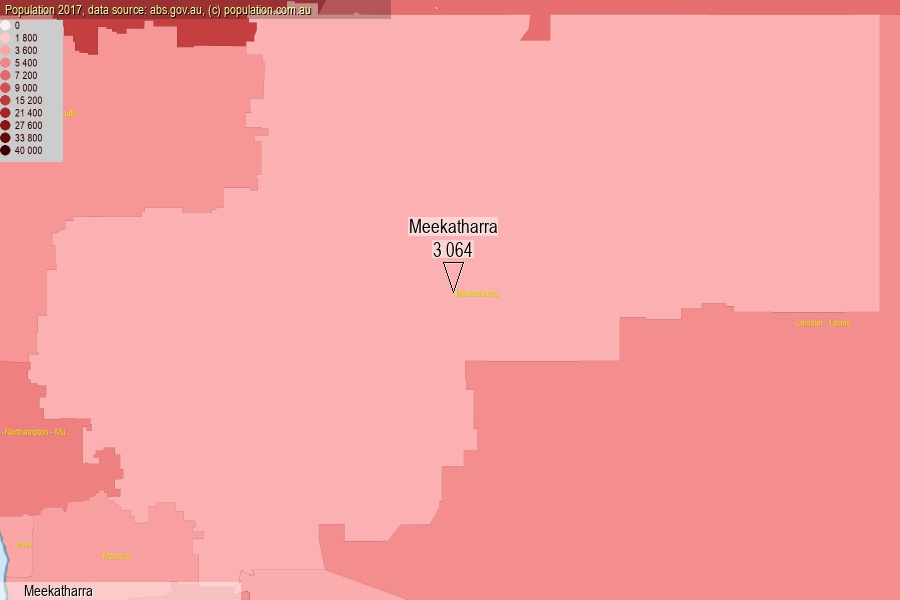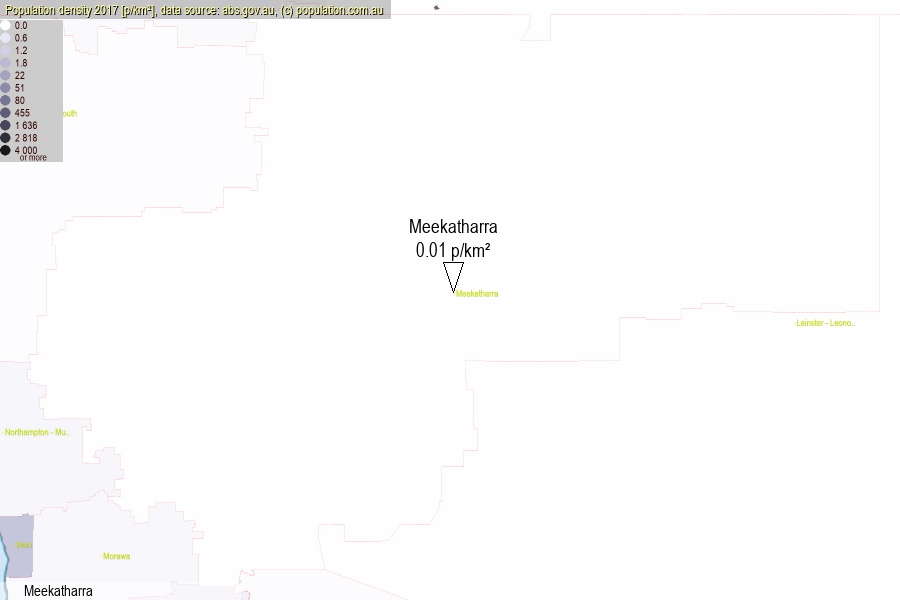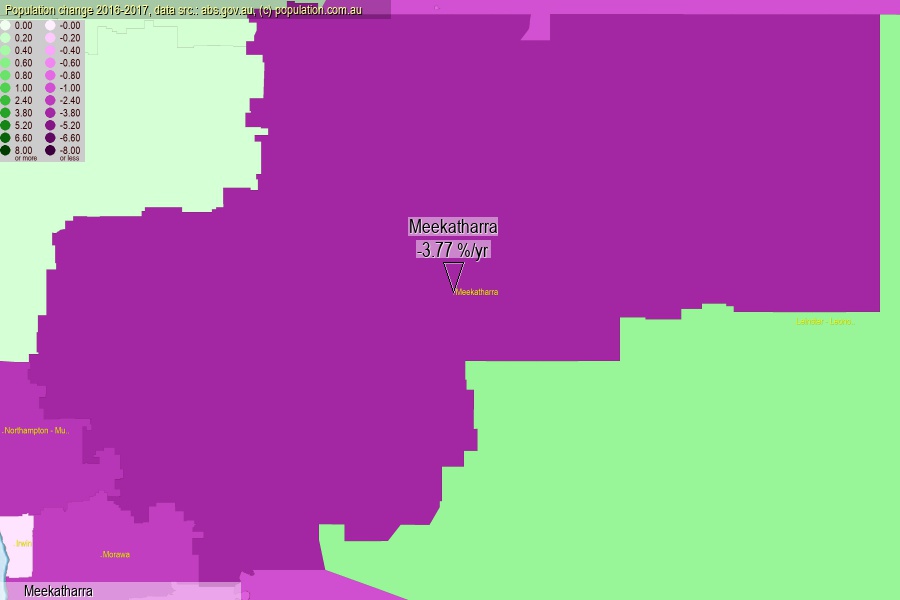 population.com.au
population.com.auLast official estimated population of Meekatharra (as Statistical Area Level 2) was 3 064 people (on 2017-06-30)[2]. This was 0.01% of total Australian population and 0.118% of WA population. Area of Meekatharra is 414 527.00 km², in this year population density was 0.01 p/km² . If population growth rate would be same as in period 2016-2017 (-3.77%/yr), Meekatharra population in 2025 would be 2 253. [0]



Click to enlarge. Meekatharra is located in the center of the images.
Population [people], population density [p./km²] and population change [%/year] [2]
View borders » (new window) [4]
[2001-2002] -2.22 %/Yr.
[2002-2003] -2.83 %/Yr.
[2003-2004] -3.48 %/Yr.
[2004-2005] -5.21 %/Yr.
[2005-2006] -3.67 %/Yr.
[2006-2007] +0.87 %/Yr.
[2007-2008] +2.97 %/Yr.
[2008-2009] +5.38 %/Yr.
[2009-2010] +3.02 %/Yr.
[2010-2011] +5.43 %/Yr.
[2011-2012] +0.33 %/Yr.
[2012-2013] -1.23 %/Yr.
[2013-2014] -7.00 %/Yr.
[2014-2015] -8.81 %/Yr.
[2015-2016] -10.06 %/Yr.
[2016-2017] -3.77 %/Yr.
[0] Calculated with linear interpolation from officially estimated population
[1] Read more about SA2 and Australian Statistical Geography Standard (ASGS) on abs.gov.au
[2] Population data from Australian Bureau of Statistics (Population and density: 2017; change: 2016-2017)
[3] Digital Boundaries: Australian Statistical Geography Standard (ASGS) 2016.
[4] Border coordinates are simplifyed using Ramer-Douglas-Peucker algorithm.